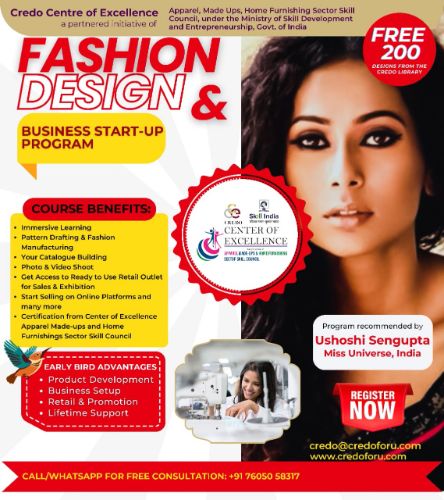Paromita Das
New Delhi, 8th July: In a state where symbolism often outweighs speeches, Maharashtra’s political theatre witnessed a moment few thought possible: estranged cousins Raj and Uddhav Thackeray, who spent two decades on opposite ends of a bitter family feud, stood shoulder to shoulder, fists raised, vowing unity for Marathi identity. Their surprise reunion on a glittering stage at Mumbai’s NSCI Dome, meant to celebrate the scrapping of a contentious three-language policy, may have started as a cultural statement — but no one doubts its deeper political undertones.

In the roaring cheers and tearful embraces, one thing was clear: this was not just about rolling back a language policy. It was about rewriting a fractured legacy, reclaiming lost ground, and sending a calculated message to friends and foes alike — the Thackeray brand isn’t finished yet.
A Family Rooted in Controversy and Legend
The Thackeray name has always carried myth and controversy in equal measure. Long before Raj and Uddhav became household names, their grandfather, Keshav Sitaram Thackeray — better known as Prabodhankar — chronicled tales of a migration that still fuels political whispers today. In his writings, he described how their CKP (Chandraseniya Kayastha Prabhu) ancestors journeyed from ancient Magadha — present-day Bihar — during the Nanda dynasty. It’s a historical footnote opponents like to dust off when it suits them.
In 2012, Congress’s Digvijaya Singh gleefully stirred the pot by claiming the Thackerays were migrants from Bihar — irony not lost on those who remember Shiv Sena’s fiery ‘sons of the soil’ rhetoric. Uddhav has pushed back, clarifying the tale belongs to the larger CKP community’s lineage, not just his family’s. But in Maharashtra’s political trenches, such barbs never really fade.
The Rift That Shaped Two Parties
Few families illustrate Maharashtra’s political churn like the Thackerays. Raj and Uddhav were once inseparable, heirs-apparent to Balasaheb’s fierce brand of regional politics. In the Sena’s heady days of the ‘90s, Raj’s oratory and charisma often stole the show while Uddhav quietly handled the levers of the party. But bloodlines mean little when ambition is bruised. In 2003, Bal Thackeray crowned Uddhav as Shiv Sena’s working president — a move Raj never forgave.
By 2005, Raj walked out dramatically, vowing to build a party in his own image: the Maharashtra Navnirman Sena (MNS). In the years that followed, their paths crossed only through fiery speeches and election rallies. Each election eroded their clout a little more — Uddhav struggled to hold the Sena together amid rebellions, while Raj’s MNS never found the traction it once promised.
The Strategic Embrace
Yet here they were — older, greyer, bruised but not broken — hugging under arc lights, united by what some call nostalgia, others necessity. Raj’s quip about Devendra Fadnavis doing what even Bal Thackeray couldn’t — reuniting the cousins — was more than just sharp wit. It was a jab at the BJP’s encroachment into traditional Marathi turf.
Uddhav, ever the softer voice, spoke of brotherhood and betrayal, unity and resolve. Their combined rhetoric framed the reunion as a cultural stand — but nobody in Maharashtra buys the idea that this wasn’t about power. With the once-mighty Shiv Sena split down the middle, Eknath Shinde now wearing the crown, and the BJP in full command, both cousins face a political winter unless they do something drastic. The upcoming Brihanmumbai Municipal Corporation (BMC) polls — Mumbai’s richest civic body and Sena’s long-time fortress — could decide whether the Thackeray name still has weight on a ballot.
Nostalgia Has Limits
It is tempting to romanticise the reunion — two cousins reconciling for Marathi pride, guided by Balasaheb’s spirit. But politics isn’t a family soap opera; it’s cold arithmetic. The reality is both leaders need each other more than ever. Uddhav’s faction needs street muscle and Raj’s emotive appeal. Raj needs relevance, and Uddhav provides a lifeline back to the spotlight.
Yet, unity is easier to sell in front of cheering crowds than sustain in smoke-filled backrooms. Their rivalry left deep scars, not just in their hearts but in their respective followers, many of whom see the other as a traitor to Balasaheb’s legacy. To believe that decades of bitterness will dissolve overnight is to underestimate Maharashtra’s ruthless political terrain.
A Hug Can’t Be a Strategy
Raj and Uddhav’s handshake might have made headlines, but whether it moves votes is another matter. Mumbai’s Marathi voters are older, more pragmatic, and painfully aware of how splintered the Thackeray family has become. The cousins will have to convince them that this is not just nostalgia or desperation, but a real force capable of taking on the BJP juggernaut and a divided Congress.
In the end, Maharashtra loves its political drama. But once the lights dim and the slogans fade, voters want more than hugs and family reconciliations. They want leadership — something both Raj and Uddhav must prove they can deliver, together, or not at all.
The post A Hug After Twenty Years: Raj and Uddhav Thackeray’s Reunion and the Politics of Survival appeared first on Global Governance News- Asia's First Bilingual News portal for Global News and Updates.



